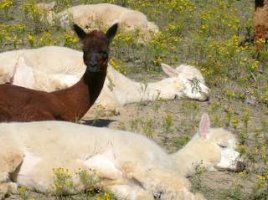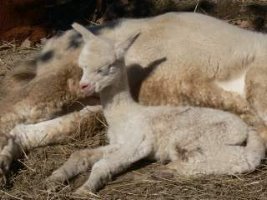Welcome to our alpaca farm site!

Alpaca
Info on BVDV

Alpaca BVDV or BVD

Bovine viral diarrhea virus (BVDV) is a familiar disease to the cattle industry. Although currently rare in alpacas the Alpaca Research Foundation (ARF) has stated that there is clear evidence that the disease has been present in the North American alpaca herd since at least 2001 and likely originated from BVDV infected cows. As recent as Feb 1, 2006 at least 40 persistently infected (PI) alpacas have been identified in our national herd.
We feel every alpaca owner should take this emerging potential threat seriously. Knowledge along with testing is the key to controlling and preventing this disease from spreading.
Our Precautionary Measures
At Walnut Creek we have consulted with our veterinarians and taken all the necessary precautionary measures to ensure we stay a BVDV free farm.
Testing our entire herd for BVDV
Prior testing is required on all alpacas coming to Walnut Creek
Quarantine pens for all alpacas returning from a show and for visiting alpacas
All of our show alpacas will remain in quarantine for 4 weeks and then retested for BVDV before joining the rest of our herd.
BVDV Brief Overview
An alpaca is exposed to the virus from an infected alpaca or cow. They have a short lived infection. The alpaca's antibodies neutralize the virus. They rarely have diarrhea and may show no symptoms at all. No problems arise and the alpaca goes on to live a normal healthy life.
The pregnant alpaca when exposed to the virus will also have a short lived infection with virtually no complications to her at all. However, the unborn fetus can have serious effects from the virus. Depending on when the pregnant female was exposed to the virus the symptoms to the fetus range from no effect, abortion, to the birth of a persistently infected (PI) cria.

The reason the fetus may become PI is because the fetal immune system accepts the virus as it's own. The fetus never develops the antibodies to fight the virus, thus they become persistently infected. A PI cria may do poorly or may show no symptoms at all.
The reason the PI cria is such a serious threat is that they shed huge amounts of the infectious virus through respiration and through body fluids every day. There is no treatment for a PI cria and it must be euthanized. The thought of having to put one of our precious crias down would be heartbreaking. It's so important to test all of your alpacas for BVDV this way you can prevent the loss of crias.
Testing for BVDV
(PCR) Polymerase Chain Reaction, (VI) Viral Isolation, and (IHC) Immunohistochemistry all test for the presence of the virus.
(SN) Serum Neutralization tests for the presence of the antibody.
Please check with your veterinarian as to which tests would be appropriate for your alpacas.
The ARF will keep the alpaca community updated through the Alpaca's Magazine as well as updates on their website at www.alpacaresearchfoundation.org and additional information can be found at Washington State University at www.vetmed.wsu.edu/depts_waddl/bvdcamelids.asp
Visit Walnut Creek's Alpaca Blog to see what we're up to and for the latest news.
Featured Stud

Classic Peruvian Magic an 8x Champion with an elite fine fleece... read more
Books

A Breeding Book to help you get your females pregnant. Visit our alpaca books reference page for more information.
Dave & Karen Galbraith
P.O. Box 820
Talihina, Oklahoma 74571
(918) 563-4245 send us an email
send us an email ![]()
Thank you for visiting our farm site!

Sitemap
Copyright © 2003-2014 Walnut Creek - All Rights Reserved
